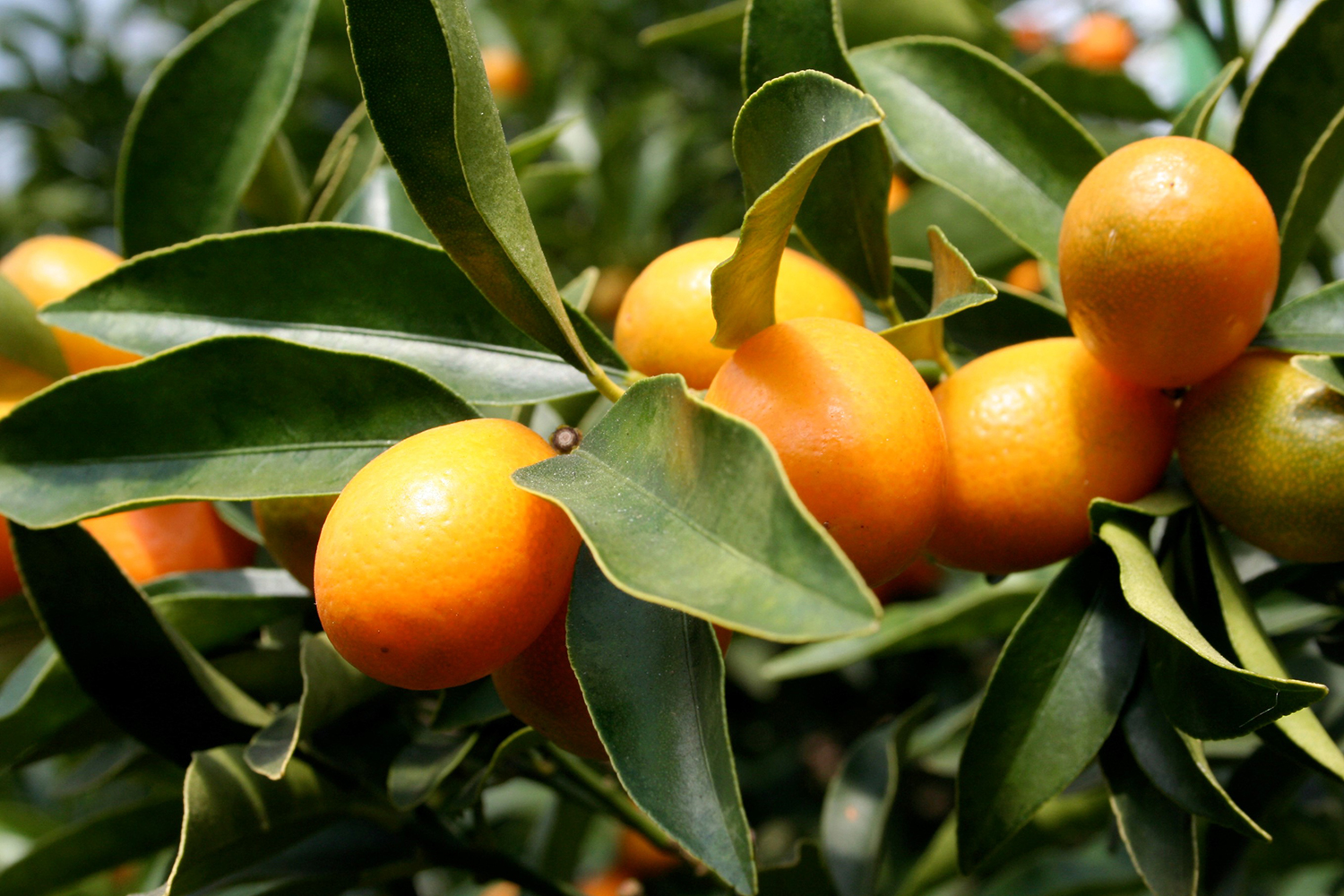Have you ever come across a bunch of bite-sized fruit that look like mini oranges? This little fruit is known as a kumquat, pronounced kuhm-kwot.
What is a Kumquat?
Native to China and Japan and now grown in the United States, Europe, and other countries, kumquats are found in literature dating back to the 12th century. Kumquats grow on trees with dark green leaves and white flowers, and one single tree can produce thousands of kumquats each year!
Kumquats are about the size and shape of grapes with an orange, gold color. The thin peel is edible and has a sweet taste, especially compared to the juicy flesh, which is tart. Together, peel and flesh provide a unique sweet-and-sour flavor combination packed in nutrients.
Not a fan of tart foods? No problem! The sweet peel contains more nutrients than the flesh, so you can avoid the sour flesh while still reaping health benefits.
Kumquat Nutrition Value
Kumquats are nutritional powerhouses that provide vitamin A, B vitamins, calcium, iron, and even some heart-healthy omega-3 fatty acids. Packed with water and fiber, kumquats make a great low-calorie, but filling snack. Just five kumquats provide about 6 grams of fiber, which is 20 percent of the daily recommendation.
Kumquats are a great source of immune-boosting vitamin C, which also acts as an antioxidant. Eating foods rich in antioxidants can help the body neutralize harmful free radicals that damage cells and cause inflammation. High levels of free radicals are linked to many chronic diseases, such as cancer and heart disease.
Kumquats get their orange color from plant pigments called carotenoids that are also antioxidants. A 2015 study found certain carotenoids in the kumquat pericarp, or the fruit wall, stimulate natural killer (NK) cells. The activation of these NK cells has been shown to create an immune defense against cancer and various infectious diseases.
How to Use Kumquats
Kumquats can typically be found in stores from November to April. They’re a great snack on their own but can also be incorporated into various dishes. Try slicing them thin and adding them to your cottage cheese, yogurt, or salads.
Kumquats can add a unique citrusy twist to chicken or fish dishes, and also make a great flavor for homemade marmalades, jellies, and jams. Next time you are looking for a snack, consider adding kumquats to brighten up your day!




